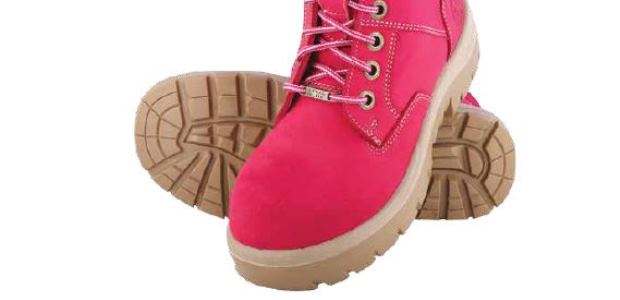
One Pair for Life
Underfoot comfort needs to be the first consideration when choosing your next pair of safety boots.
- By Steve Nash
- Apr 01, 2016
For most Americans who require safety footwear, the first prerequisite when choosing a suitable safety boot is comfort. Seems obvious enough that it’s a logical thought process, especially when you're on your feet for 12 hours a day, five days or more a week—for 48 weeks a year. If we calculate that out, it's 2,880 hours a year. Over a conservative estimate of a 30-year career, that’s a total of 86,400 hours on your feet.
So, yes, it;s an obvious conclusion, but what do people know about their feet to make an informed decision? Every able person has only one pair for their lifetime, so it's important to self-educate yourself with the following facts:
- The foot contains 26 bones, 33 joints, 107 ligaments, and 19 muscles.
- One-quarter of all of the bones in the human body are down in your feet. When these bones are out of alignment, so is the rest of the body, which can cause ankle, knee, hip, and spine fatigue and injury.
- Ensure your safety footwear is comfortable. Good-quality, well-fitted safety footwear should not be uncomfortable and will need very little breaking-in time.
- A wearer's two feet may be different sizes. Buy shoes for the larger one. Generally, your feet will swell during the day after prolonged periods on your feet. Always try on boots at the end of the shift if possible.
- The average person takes 8,000 to 10,000 steps a day, which adds up to about 115,000 miles over a lifetime. That's enough to go around the circumference of the earth four times.
- Only a small percentage of the population is born with foot problems. These arise because of neglect and a lack of awareness of proper care—including ill-fitting shoes, lack of underfoot support, and comfort.
- Women have about four times as many foot problems as men. High heels are partly to blame, but also the serious lack of legitimate female fitting options available in the safety footwear market. Do your research, ladies!
- Recognize that comfortable safety footwear will reduce fatigue and keep you fresher and alert longer. Accidents and injuries occur when you are tired, so make sure your footwear isn't a contributing factor.
- Ensure the right footwear is used for the right job. There are many brands, designs, and types of safety footwear available. Ask the manufacturer or supplier to advise on the correct footwear for use.
- Your feet mirror your general health. Conditions such as arthritis, diabetes, and nerve and circulatory disorders can show their initial symptoms in the feet, so foot ailments can be your first sign of more serious medical problems.
- Arthritis is the number one cause of disability in America. It limits everyday dressing, climbing stairs, getting in and out of bed, or walking for about 7 million Americans.
- About 60-70 percent of people with diabetes have mild to severe forms of diabetic nerve damage, which in severe forms can lead to lower limb amputations. Approximately 56,000 people a year lose their foot or leg to diabetes.
- There are 250,000 sweat glands in a pair of feet. Sweat glands in the feet excrete as much as a half pint of moisture a day.
Many Footwear Options Are Available
Reviewing the above facts reinstates the importance of having comfortable boots to look after feet, as well as your overall body health. The safety footwear market was slow to react but, to its credit over the past 20 years, an explosion of options have entered the market to provide a variety of choice to take care of consumers' overall body health.
Cushioning underfoot reduce pressures, impacts, and shocks. In turn, this reduces stress injuries to ankles, knees, hips, and spine and eliminates arch, heel, and ball of foot pain. Polyurethane introduced to the midsole reduces the weight without compromising durability, which in turn helps to reduce overall fatigue.
A large variety of different foot beds are now available to adequately align the foot by cradling and dispersing the pressure evenly. As one walks, this reduces the stress and strain onto your lower body. Breathable linings serve to alleviate foot fungal diseases and ailments by keeping feet as cool and dry as possible. Simple ergonomic improvements to safety toe caps have allowed feet to sit in their relaxed, comfortable, and natural state.
Safety footwear has an enormous influence on the way feet move, yet so many overlook the importance of a proper well-cushioned boot. The body uses natural methods to decrease the forces of impact and absorb shock in the lower part of the body. Generally, it is considered that a boot is required to reduce the forces further.
Be smart and, remember, you only have one pair of feet for your life. Underfoot comfort needs to be the first consideration when choosing your next pair of safety boots.
This article originally appeared in the April 2016 issue of Occupational Health & Safety.